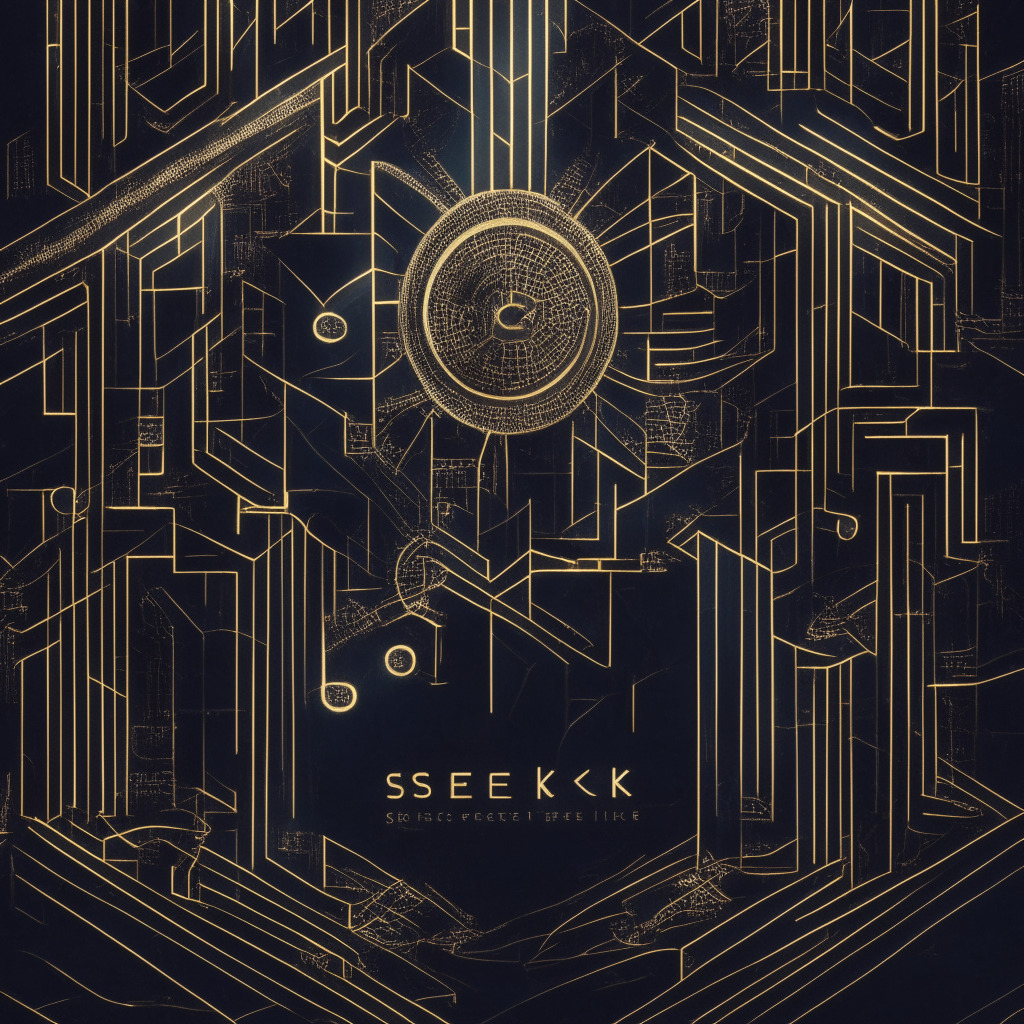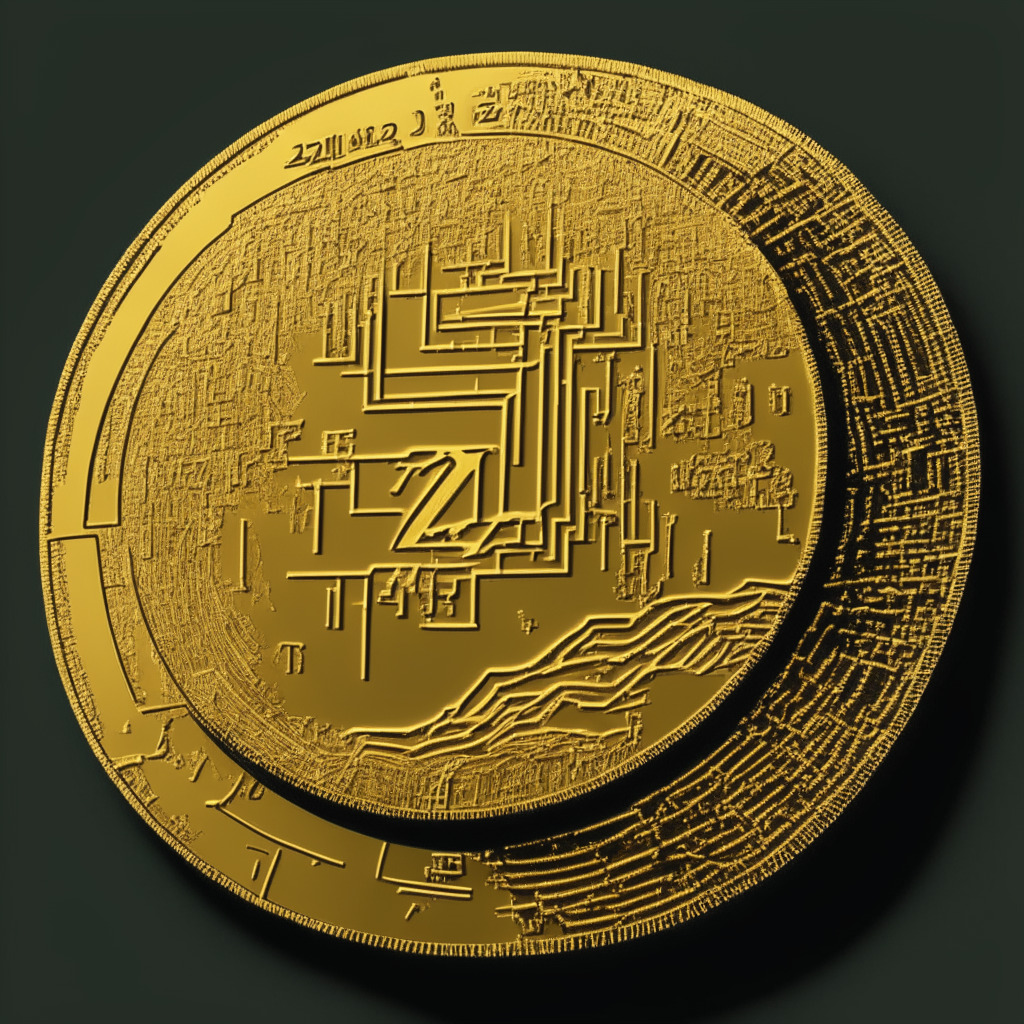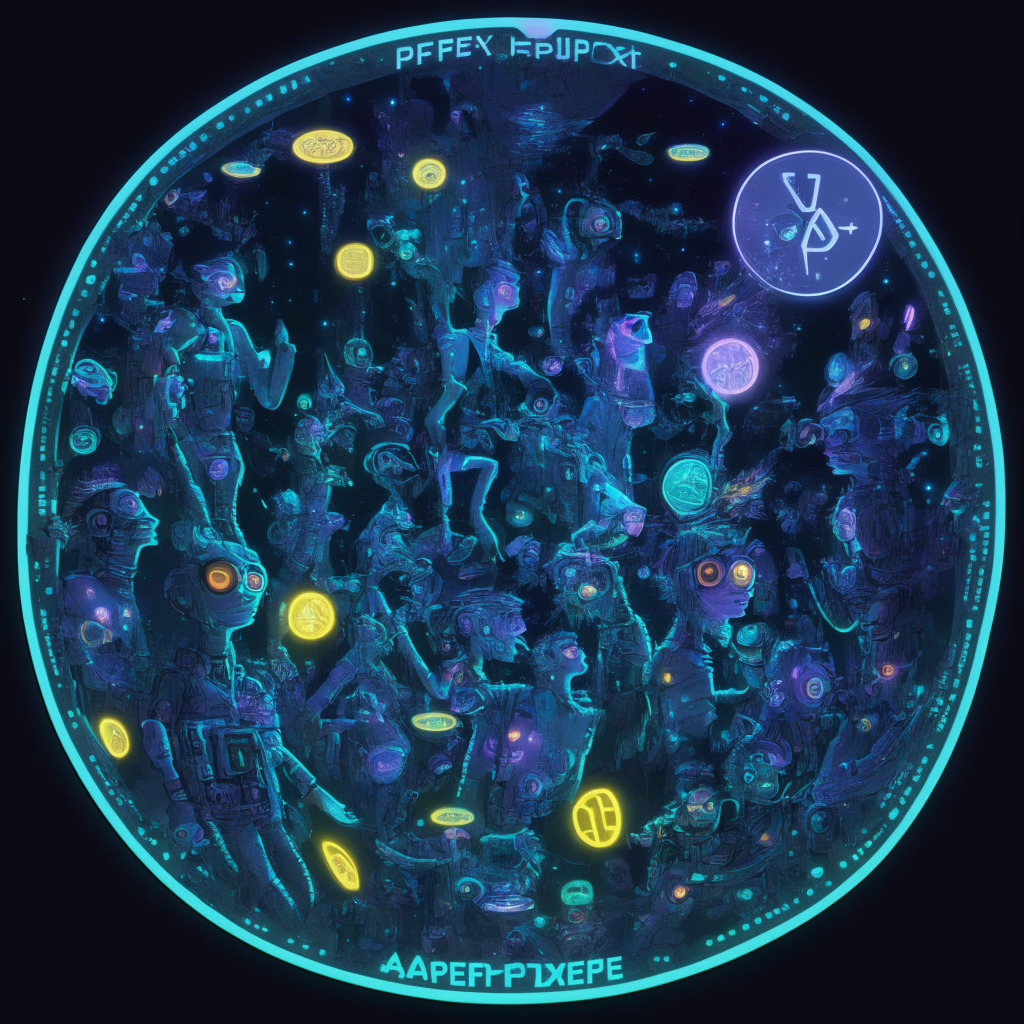Despite the closure of Algofi, a lending protocol founded on Algorand’s blockchain system, developers remain confident in Algorand’s technology. The unexpected shutdown highlights the complex dynamic between technological innovation and rigorous regulatory policy within the crypto landscape, emphasizing the unpredictability of the evolved financial system.
Search Results for: ALGO
Algorand’s Upgrade Showdown: Increased Efficiency vs. Potential Risks
Algorand’s proof-of-stake blockchain recently introduced a significant protocol upgrade aimed at speeding up transactions and improving application development efficiency. The most notable enhancement is the block time reduction from 3.8 to 3.3 seconds, fostering competitiveness and user confidence in this ever-evolving space.
AI Representation of People of Color: Exploring Bias in Art and Algorithms
In the online exhibition IN/Visible, curated by Senegalese artist Linda Dounia Rebeiz, 10 black artists showcase works exploring AI’s biases in representing people of color. Dounia advocates an activist approach and emphasizes the importance of raising questions about AI’s inherent biases, while encouraging black artists to create more inclusive representations using AI tools.
SEC’s Labels Impact ALGO and FLOW: Analyzing Market Reaction and Crypto Resistance
The SEC’s decision to label several cryptocurrencies as securities resulted in historic lows for Algorand (ALGO) and Flow (FLOW) on June 10. Despite opposition from projects like Solana, Cardano, and Polygon, the crypto market thrives, but ongoing debates may create volatility for investors.
Eco-friendly Algorand vs Security Concerns: Balancing the Blockchain Future
The future of cryptocurrencies is leaning towards sustainable blockchains like Algorand, which utilizes an eco-friendly pure proof of stake protocol. While this method lowers energy consumption, critics argue it might compromise security and decentralization—highlighting the challenge of finding a balance between sustainability and other crucial aspects of blockchain technology.
crvUSD Launch: A New Era for Algorithmic Stablecoins or Another Failure in the Making?
The decentralized finance world celebrates the successful launch of CurveDAO’s algorithmic stablecoin, crvUSD, with over $22 million minted. Curve’s crvUSD aims to avoid previous pitfalls experienced by other algorithmic stablecoins, potentially reshaping the DeFi ecosystem if successful.
Temasek Backs Array’s AI-based Algorithmic Currency Despite FTX Loss: Risks and Rewards
The Singapore government-owned investment firm Temasek remains undeterred in its commitment towards cryptocurrency projects, despite […]
Unwrapping the Saga of Alameda’s USDT Mints & Zimbabwe’s Gold-Backed ZiG Tokens
“Alameda Research has minted over $38 billion in Tether (USDT) tokens in 2021, indicating that the total value of USDT creation surpasses Alameda’s total assets. The inner workings of this process involve benefiting from trade value discrepancies and ensuring USDT’s dollar peg stability. However, this raises ethical concerns for industry watchers.”
Achieving Finality in Blockchain: Irrevocable Transactions, Challenges and Future Prospects
“Finality in blockchain refers to the irrevocable confirmation of a transaction or block of transactions. Achieving finality has challenges like network latency and potential 51% attacks. However, improved security algorithms, consensus algorithms and advanced cryptographic techniques promise faster, more reliable confirmations, and permanence of transactions.”
Disrupting the Bitcoin Mining Industry: Unpacking the Bitcoin Minetrix Project
“Bitcoin Minetrix has emerged as a potential game-changer in the field of tokenized Bitcoin cloud mining. Their Stake-to-Mine paradigm offers users the opportunity to mine Bitcoin by staking tokens, resulting in a redistribution of mining profits from corporates to retail investors. This approach provides a high yield return, offering both access and inclusivity to the Bitcoin mining process.”
Unpacking Project Atlas: A Centralized Perspective on Decentralized Markets
‘Project Atlas’, pioneered by Bank of International Settlements and various European Central banks, is developing a proof of concept system tracking on-chain and off-chain cryptocurrency transactions. The project aims to understand macroeconomic relevance of cryptocurrency markets and decentralized finance, offering transparency and potential risk mitigation.
Decoding CryptoNight: Champion of Mining Democracy or Falling Giant?
The CryptoNight mining algorithm, a feature of the CryptoNote protocol, aims to prevent the centralization of mining power by allowing CPUs and GPUs to mine blocks. Despite criticisms and ASICs adapting, it remains a successful tool advocating privacy and fairness in mining.
Leased Proof-of-Stake: Game-Changer or Just Another Player in Blockchain Technology?
“Blockchain technology introduces Leased Proof-of-Stake (LPoS), an innovative mechanism aimed at overcoming crypto mining complications. LPoS allows tokenholders to lease their tokens to validator nodes, improving their chance at generating new blocks and sharing transaction fees. While offering benefits such as decentralization and fixed tokens, LPoS also maintains control by restricting trade or transfer of leased tokens.”
Crypto Scams and Increased Regulatory Scrutiny: A Double-Edged Sword for Investor Safety
The US Commodity Futures Trading Commission (CFTC) has cracked down on Mosaic Exchange Limited and its owner, Sean Michael, for fraudulent digital asset commodity practices. While regulatory bodies are stepping up their game against fraudulent cryptocurrency activities, the rise in ransomware and increased sophistication of crypto-crime highlight the need for vigilant investors.
Unleashing AI on Cryptocurrency Markets: The Potential Blessings and Curses of ChatGPT
OpenAI’s AI-powered chatbot, ChatGPT is now able to extract current information from the web, expanding its role in providing insights about the mutable crypto world. Not only predicting crypto prices, the ChatGPT’s integration in crypto risk management enables the identification of emerging threats, making the system more robust.
Scaling the Regulatory Walls: Challenges and Solutions for Digital Asset Markets
The World Federation of Exchanges (WFE) proposed six measures to ensure the safety and sustainability of digital asset markets. These include clear segregation of market infrastructure functions and establishing systems to manage user risks. The WFE also emphasized the need for crypto exchanges to demonstrate full backing of user assets and be sufficiently regulated.
Pepe Coin’s Resurgence Vs The Rise of TG.Casino: Navigating the Crypto Gaming Space
While Pepe Coin (PEPE) recently saw a 5% rise and a 91% increase in trading volume, its future remains uncertain with potential resistance looming. On the other hand, TG.Casino ($TGC), a budding crypto gaming ecosystem, offers promising growth with robust encryption, a functional token system and swapping capabilities, urging prospective investors to look closely at the disrupting token’s merits.
Navigating Cybersecurity Challenges in the Cryptocurrency Sector: A Balancing Act Between Threats and Innovations
“The vibrant and rapidly evolving cryptocurrency sector experiences various cybersecurity issues, including phishing attacks, malware, and flaws in smart contracts. Despite blockchain and decentralized technologies bolstering security, these technologies present unique risks. To counter these, security experts advocate for cold storage solutions, strong passwords, two-factor authentication, and caution against phishing attempts.”
Unraveling Stablecoins: Booming Assets or Impending Crisis?
“This report by the United States Federal Reserve Banks reveals the potential impact of stablecoins on the economy. Highlighting the similarity between stablecoins and money market funds, it warns of the vulnerabilities these coins face during market downturns. Issues like risky backing collateral and erosion of investor confidence can lead to substantial losses.”
Understanding Bitget’s Smart Portfolio: The Future of Intelligent Crypto Investing
Bitget has introduced an intelligent bot, Smart Portfolio, aimed at boosting profits by dynamically rebalancing user’s crypto assets according to market fluctuations. The bot targets brief price gains and reinvests in undervalued coins, potentially enhancing overall portfolio value. This automated solution also supports customized rebalancing modes, aligning with individual investment strategies while accounting for market volatility.
Overcoming MetaMask’s Gas Fee Glitch and Blockchain’s Role in Verifying the Next Moon Landing
A glitch that overcharged MetaMask users on opBNB gas fees has been rectified. Originally, MetaMask’s default fee, calculated on an average of networks, failed to align with opBNB. To address this, MetaMask altered their algorithm to accurately display the network’s fees.
Emerging Solar-Powered Crypto: SOLX Shines Despite Market Slump and MK Dances with Memes
“SolarX and its token SOLX are garnering attention despite the crypto market’s downward trend. SOLX uses solar energy for mining, integrating an environmental dimension into its blockchain workflow. Amidst other emerging tokens like Meme Kombat (MK), it’s crucial for investors to make informed decisions about these promising yet uncertain crypto investments.”
Latency in Cryptocurrency Trading: A Barrier or a Competitive Edge?
“Latency in cryptocurrency trading significantly impacts the speed and flexibility of trades. Though achieving low latency can be challenging and costly due to investments in high-performance tech and regulatory compliance, its benefits in trade efficiency and competitiveness in the volatile crypto market are noteworthy.”
Declining Dominance of Stablecoins: A Shift Towards Traditional Assets or a Chance for Recovery?
Despite a difficult year, the focus stays on the declining stablecoin sector, with major stablecoins like USDT showing consistent growth amidst the downturn. Factors such as legal action against major crypto exchanges and swings in stablecoin trading volumes due to the rush to list Bitcoin ETFs have impacted this fall. However, PayPal’s recent introduction of PYUSD could revive confidence in the sector. The future of stablecoins, while currently unstable, is still pivotal to the crypto landscape.
Unraveling the Mystery Behind Binance.US’s Bitcoin Plunge: A Human Error or Systemic Failure?
The price of Bitcoin plunged by 87% within minutes on Binance.US due to an alleged trading error made by Alameda Research. This mishap exposed the vulnerability of the cryptocurrency market and initiated calls for greater transparency and preventive measures from trading firms.
Bridging Artistry and Blockchain: The Rise of Generative Art in the Crypto Sphere
“William Mapan, a noted NFT artist, likens blockchain-based generative art to drawing guided by the roll of dice. A harmonious blend of predetermined rules and randomness, this form of artistry aims to evoke emotions and trigger personal memories in the audience. Despite market fluctuations, the allure of the unique union of blockchain technology and artistic creativity persists.”
AstroPepeX: The First AI-Spawned Memecoin Sparks Excitement, Questions, and Concerns
An AI, specifically ChatGPT, crafted a memecoin, “AstroPepeX,” valued at $3.5 million, demonstrating a potential AI-Blockchain collaboration. This development questions overreach of AI, control, regulation, and potential risks in the unpredictable crypto market. This is especially pertinent as AI-generated tokens can impact investors and small-scale developers.
Billionaire Mark Cuban’s Cryptocurrency Heist: A hard Lesson on Crypto Safety
Billionaire investor Mark Cuban recently lost nearly $900,000 in crypto from his hot wallet in a swift heist. The security breach highlights the inherent risks of dealing with cryptocurrencies, stressing the need for robust anti-money laundering, fraud detection, and regulatory measures. Even seasoned investors like Cuban are reminded to maintain vigilance and ensure precautions when interacting with these digital assets.
Exploits, Ethics and the Attack on Curve: Examining the Undeniable Impact of Crypto Heists
In July, a $73 million exploit on Curve, a key decentralized finance player, impacted the wider DeFi platform’s asset-pricing system. A trading bot manipulated the vulnerability, inadvertently benefitting Coinbase, the Ethereum validator involved. Most of the stolen money was recovered yet left questions about asset recovery procedure after crypto heists.
Trading Showdown: Forex vs Cryptocurrency – Stability or Innovation?
“Traditional forex trading involves trading fiat currency pairings, driven by worldwide financial hubs. Contrarily, cryptocurrency trading pertains to buying and selling digital currencies through exchanges, which introduces high volatility. Each market has unique advantages, risks, analysis methods, and strategies providing diverse opportunities.”
Navigating the Twisty Paths of Lightning Network: Routing Attacks, Threats and Measures Against Them
Safeguarding assets from routing attacks is crucial in the crypto ecosystem, particularly for the Lightning Network. These attacks exploit network vulnerabilities for personal gain and can undermine network efficiency. However, preventive measures are in place, including network surveillance tools, diligent upgrades, diversified channels, and community participation to enhance security. Users must maintain vigilance and understand the risks and safeguards.
Ripple Migration: A Wake-Up Call on Regulatory Clarity in the Crypto Industry
Ripple CEO Brad Garlinghouse revealed that 80% of the company’s recruitments in 2021 will be in nations with clear regulatory landscapes like Singapore, Hong Kong, U.K., and Dubai, due to the ongoing legal frost with the U.S. SEC. This underscores how uncertain regulations can impact global industry growth.































